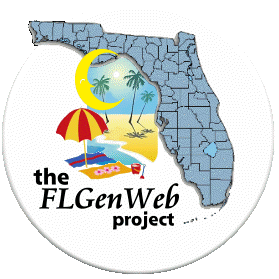Brief Sketch
From Wikipedia
"Punta Gorda occupies a point where the Peace River meets Charlotte Harbor.
The first settlers, the Howard brothers, came to Charlotte Harbor in the late 19th century, about a decade after the close of the American Civil War. The rate of growth in the area hasn’t changed much since then. Less than ten years after the first settlements in the area, railroads rolled into town, and with them came the first land developers and Southwest Florida’s first batch of tourists.
Punta Gorda became the southernmost stop on the South Florida Railroad, attracting the industries which propelled its initial growth. One man drawn to the area was George Brown, an African-American shipbuilder and landowner, who became one of Punta Gorda’s founding fathers.
In 1887, just 12 years after the first settlers trekked to Charlotte Harbor, 34 men, 4 of whom were African-American, met at Hector’s Billiard Parlor and Drugstore to discuss incorporation.
Once Punta Gorda was officially incorporated, mayoral elections took place and a council was formed. Four of the five council members elected were not American citizens, and the remaining councilman was a native of Florida, Albert Gilchrist.
In 1890, the first postmaster of Punta Gorda was appointed. Robert Meacham, an African-American, was appointed by jilted lawyer Isaac Trabue as a deliberate affront to the Southern mentalities of the original community. Trabue had come to Punta Gorda to create his own town, named after himself. When the founders incorporated Punta Gorda without Trabue, he vowed revenge. Trabue eventually left the area and returned to his home in Kentucky.
Early Punta Gorda greatly resembled the modern social climate of various classes living together and working together. While the regal Punta Gorda Hotel, at one point partly owned by Cornelius Vanderbilt, reflected the upper class, Punta Gorda was a pretty tough town, as most frontier towns were. In the early days, Punta Gorda’s location at the end of the railway line made it a popular destination for some pretty shady characters, resulting in around 40 murders between 1890 and 1904.
In 1925, a bungalow was built by Joseph Blanchard, an African-American sea captain and fisherman. The Blanchard House still stands as a museum, representing middle-class African-American life in the area. Exhibits cover political, civic and religious life; founding families; education; and the Civil Rights Movement through vintage photos, newspaper clippings and family heirlooms.
The Blanchard House and Museum of African American History and Culture of Charlotte County highlights the community that thrived from the town's founding until integration led residents to move away and businesses to close. In addition to exhibits, the museum will serve as a community center with a library of books by black writers, a book club, seminars on African-American history and culture, and leadership classes.
Punta Gorda in the 20th century still maintained steady growth. Charlotte County was formed in 1921 after DeSoto County was split. Also in 1921, the first bridge was constructed connecting Punta Gorda and Charlotte Harbor along the brand-new Tamiami Trail. This small bridge was replaced by the Barron Collier Bridge in 1931, and then by the current bridge crossing the Peace River."
Post Office
-
Historical
-
A post office was located here in 1888 and is currently active
-
-
Current
- Post Office - Punta Gorda
- 130 E. Marion Ave.
- Punta Gorda, FL 33950-9998


